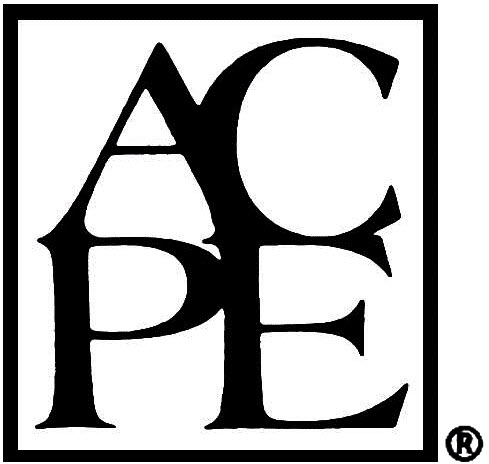Recognizing and Managing Adolescent Depression
Disease State Management/Drug Therapy CE for Pharmacists
Are you a Pharmacy Tech? Check out the Pharmacy Tech version of this course.
Course Summary
Adolescence is a turbulent phase of life. This course begins with a concise discussion of the developmental tasks of adolescence. Subsequently, it delves into the epidemiology of adolescent depression, providing an overview of its prevalence and impact. Finally, the course focuses on exploring diagnostic criteria, risk factors, common comorbidities, and evidence-based treatments associated with depression in this age group, utilizing a patient example for illustrative purposes.
Recognize the signs and symptoms of adolescent depression, including high-risk adolescent patients
Understand the role of screening tools in the diagnosis and management of depression
Review evidence-based pharmacologic and non-pharmacologic treatment strategies for depression
Review the multifactorial role of counseling and patient education, with a focus on common misconceptions about depression
Course Syllabus
I. Introduction
II. The Challenges of Adolescent Growth and Development
A. Developmental Tasks of Adolescence in the Context of Medical Care
B. Adolescent Scenario # 1
III. The Scope of the Problem
IV. Diagnostic Criteria
A. DSM-5–TR Major Depressive Disorder (MDD)
B. ICD-11 Depressive Disorder
C. Screening and Risk Factors
D. Adolescent Scenario # 2
E. Adolescent Scenario # 2, Continued
V. Differential Diagnosis and Comorbidity
A. Other Types of Depression
B. Comorbid Disorders of Mental Health
C. Medical Conditions and Medications
D. Adolescent Scenario # 2, Continued
VI. Evaluating Suicidal Risk
A. A Word About Firearms
B. Adolescent Scenario # 2, Continued
VII. Building and Maintaining a Therapeutic Alliance
A. Adolescent Scenario # 2, Continued
B. Symptom Severity and Functional Impairment
C. Adolescent Scenario # 2, Continued
VIII. Pharmacotherapy, Psychotherapy, Lifestyle Changes: How to Choose an Effective Treatment Plan
A. Pharmacotherapy
B. Psychotherapy
C. Lifestyle Changes
IX. Summary
- Read the course objectives and faculty planner disclosure
- Read the course material
- Complete the post-test with a minimum score of 70% and complete the course evaluation form.
- Results are automatically submitted to CPE Monitor
Faculty Planner Disclosure
The following individuals were involved in developing this activity: Ellen Feldman, MD, and Pamela Sardo, PharmD, BS. Pamela Sardo was an employee of Rhythm Pharmaceuticals until March 2022 and has no conflicts of interest or relationships regarding the subject matter discussed. There are no financial relationships relevant to this activity to report or disclose by any of the individuals involved in the development of this activity.
Unlabeled Use Disclosures
The information provided in this course is general in nature and it is solely designed to provide participants with continuing education credit(s). This course and materials are not meant to substitute for the independent, professional judgment of any participant regarding that participant’s professional practice, including but not limited to patient assessment, diagnosis, treatment and/or health management. Medical and pharmacy practices, rules, and laws vary from state to state, and this course does not cover the laws of each state; therefore, participants must consult the laws of their state as they relate to their professional practice. Healthcare professionals, including pharmacists and pharmacy technicians, must consult with their employer, healthcare facility, hospital, or other organization, for guidelines, protocols, and procedures they are to follow. The information provided in this course does not replace those guidelines, protocols, and procedures but is for academic purposes only, and this course’s limited purpose is for the completion of continuing education credits. Participants are advised and acknowledge that information related to medications, their administration, dosing, contraindications, adverse reactions, interactions, warnings, precautions, or accepted uses are constantly changing, and any person taking this course understands that such person must make an independent review of medication information prior to any patient assessment, diagnosis, treatment and/or health management. Any discussion of off-label use of any medication, device, or procedure is informational only and such uses are not endorsed hereby. Nothing contained in this course represents the opinions, views, judgments, or conclusions of RxCe.com LLC. RxCe.com LLC is not liable or responsible to any person for any inaccuracy, error, or omission with respect to this course, or course material.
Computer Hardware/Software Requirements
Please ensure the device you plan to use meets these requirements and specifications:
- Operating System: Windows 7,8,10, or 11 /Mac OS X 10.9 or later/iOS/Android
- Supported Browsers: Microsoft Edge, Firefox, Google Chrome, Safari, Opera
- A connection to the internet
- For Live Webinars or Conferences: GoToWebinar application for iOS, Android, Mac, or PC. You cannot 'call into' a live conference.
Rating: 3.81/5
Based on the ratings of 313 customers
- Target Audience: Pharmacist
- Secondary Audiences: This educational activity is also for other healthcare professionals, such as nurses, physicians, or others who may be part of a healthcare team and may be interested in this educational topic. A healthcare team approach to patient care may be discussed in this activity, as applicable. No state board or professional organization has evaluated this activity to determine whether it meets the continuing education requirements of nurses, physicians, or other professions not listed under the “Target Audience” described above. Always verify with individual employers or supervisors whether they will accept this educational activity upon completion.
- Contact Hours: 3.0 (0.3 CEUs)
- Activity Release Date: 2/7/2024}
- Activity Expiration Date: 2/7/2027}
- Activity Type: Knowledge
- UAN: 0669-0000-24-011-H01-P
- Topic: Disease State Management/Drug Therapy
- CeBroker Number: 20-952979
Faculty:

RxCe.com, LLC is accredited by the Accreditation Council for Pharmacy Education as a provider of continuing pharmacy education.